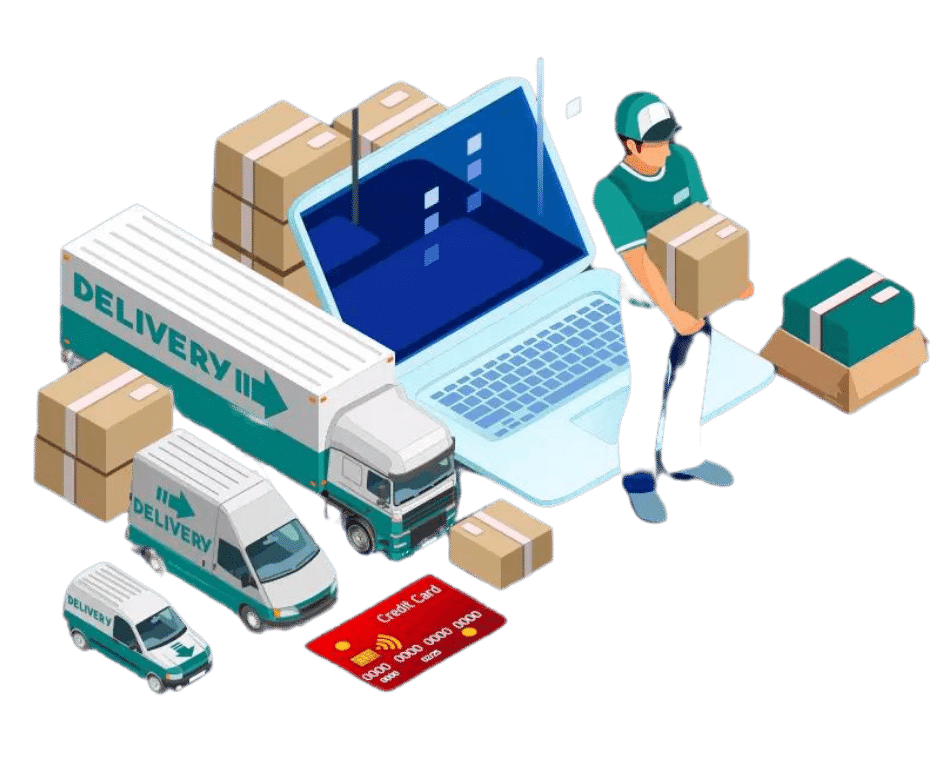The US sales and distribution systems are a complex yet essential part of doing business for many companies. The sales and distribution process involves not only the product’s passage from the manufacturer to the customer but also managing the pricing, marketing, product promotion, and customer support. To effectively succeed in this endeavor, companies must take into account the diverse tastes of their target audience as well as adhere to relevant regulations in different jurisdictions.

US Sales
Sales are an integral part of doing business in the United States. They are responsible for driving sales and revenues, helping to expand markets, building brand recognition and loyalty, and creating customer relationships. The sales process is the key factor that determines a company’s success in sales.
The sales process begins with strategic marketing. To target potential customers, marketers must research and understand their needs and desires to craft tailored campaigns that will reach them effectively. Popular methods used may include advertising, public relations, direct mail advertisements or even digital tactics such as email blasts or SEO optimization techniques. Once the campaign has been designed and approved by management, it can be released to reach potential customers. Following this step, a company will typically have to engage in pricing strategy decisions that involve setting prices for goods or services based on demand, competition, or other external factors.
Main Methods of US Sales Distribution
In the US, there are two main methods of sales distribution: direct sales and indirect sales. Direct sales involve selling directly to consumers through physical stores or online outlets like websites or apps. Big businesses and startups alike have found direct sales to be a reliable choice due to its efficiency, affordability, and speed. Still, there is the one downside of time-consuming operations when it comes to running this type of business from an owner’s perspective. When done right though, the profits can quickly add up while utilizing fewer resources than other methods available.
Indirect sales involve third parties that act as intermediaries between buyers and sellers. This method involves wholesalers or distributors who purchase goods from a manufacturer and then resell them to retailers or other businesses at a higher price. Indirect sales offer many advantages such as access to larger markets and economies of scale; however, it also has more challenges due to its complexity as well as higher overhead costs associated with managing multiple supply chains.
The Uniqueness of the US Sales and Distribution Market
The US is unique in how it approaches sales compared to other countries because it is home to many of the world’s largest brands that use both direct and indirect channels for their distribution needs. For example, Amazon was one of the first companies to embrace direct-to-consumer marketing tactics while Target built its success off of its expansive network of wholesale distributors across the United States. The way these companies have leveraged both channels has helped them gain massive market share in the US market today.
Naturally successful sales processes involve careful considerations around target markets, pricing strategies, product offerings, promotional efforts, etc., all factors which can have huge implications on a company’s bottom line depending on how they are managed throughout the process. With more competitors entering into US markets every year it is vital that companies remain proactive when it comes to creating effective strategies around their sales operations so they can remain competitive over time without sacrificing profitability margins or consumer loyalty levels in an ever-changing landscape where no strategy lasts forever.
US Distribution
Distribution is how products are shipped from manufacturer to customer. Distribution channels vary depending on the goods being sold and may include wholesalers, retailers, or even direct-to-consumer platforms like Amazon or eBay. Often times these channels involve multiple steps before finally reaching the customer which can greatly influence cost efficiency depending on how streamlined they are managed. In addition to transportation costs associated with distribution networks, there are also taxes involved which need to be taken into consideration when budgeting for expenses related to sales and distribution activities.
Wholesaler
A wholesaler is an important member of the US economy, providing businesses with a range of products at competitive prices. The wholesaler’s role is to purchase products in bulk from manufacturers and then make them available to retailers and other wholesalers. In this way, wholesalers serve as the essential link between manufacturers and consumers, bringing efficiency to the marketplace by reducing administrative labor costs and offering bulk discounts on purchases.
Wholesaling has been around since ancient times, but in the modern era it has become even more important due to globalization. Today wholesalers are able to source products from around the world and offer them at competitive prices in their local market. This allows businesses large and small to access new opportunities that would otherwise be unavailable through traditional retail methods.
Wholesalers typically operate out of warehouses or showrooms, where their products can be inspected before purchasing. Here companies can place special orders for items not found on-site, allowing for customized solutions for customers’ needs. Many wholesalers also use online outlets to reach new audiences who may not have access to a physical location. This opens up even more opportunities for them to connect with clients worldwide.
Challenges for Wholesalers
The US wholesaling industry relies heavily on technology as it continues its growth and expansion into new markets worldwide. Smartphones, apps, and websites are helping wholesalers keep track of inventory levels, price fluctuations, promotions, customer feedback, and more – all while streamlining operations with automation tools that reduce time-consuming manual processes.
Wholesalers must also build relationships with customers in order to maintain loyalty despite tough competition within the industry. As such they offer rewards programs, discounts, and incentives designed specifically for their best customers – often taking into account the frequency of purchases or total spending over time – helping them become an integral partner in their success story rather than simply another supplier in a long line of providers looking for a business.
Wholesalers are vital players in the US economy – facilitating efficient trade between producers and consumers while delivering valuable services such as product customization options; using technology to improve operational efficiency; building relationships with customers; and offering rewards programs designed just for them – all while driving strong profits year after year across many different industries!
Retailers
The retail industry in the United States is both expansive and diverse. It includes everything from convenience stores to clothing boutiques, auto dealerships to grocery stores, and much more. According to the U.S. Bureau of Labor Statistics, there are around 1 million retailers in the country, employing over 16 million people across a variety of different sectors. The retail industry generates an estimated $5 trillion annually in total sales.
Retailers come in all shapes and sizes, ranging from large national chains like Walmart and Target to family-run mom-and-pop shops scattered throughout local neighborhoods. The industry has seen many changes over the years, with physical stores increasingly turning to digital platforms to reach customers and expand their business operations. Online retailer Amazon has been at the forefront of this digital revolution, dominating the eCommerce space since its founding in 1994.
Challenges for Retailers
Retailers face a number of challenges as they strive for success in a highly competitive market. The rise of online shopping has forced many stores to rethink their strategies and adopt new technologies that can help them stay ahead of the competition. Increased transparency through online reviews and detailed product information has also made it harder for retailers to differentiate themselves from other businesses in their sector. Additionally, rising labor costs have put pressure on retailers’ bottom lines as they work hard to remain profitable while providing good wages for their employees.
Despite these obstacles, some retailers have found success through innovative approaches such as personalized customer service or engaging experiences designed to draw customers into physical locations rather than buying items online. Others have focused on building strong relationships with suppliers or developing creative marketing campaigns that emphasize the unique qualities of their products or services. These efforts have allowed some retailers to continue thriving despite tough economic conditions or increased competition from digital rivals like Amazon.
The future looks bright for retailers overall but only time will tell which ones are best able to take advantage of emerging opportunities while meeting customer needs with quality products and services at competitive prices. As traditional brick-and-mortar stores continue adapting to digital trends and innovating within their sector, those that find ways to keep up with changing consumer preferences are likely those that will succeed long into the future.
Customer Service for the US Sales and Distribution System
Customer service is another essential aspect of sales and distribution; it involves providing after-sale assistance such as troubleshooting technical issues or addressing customer grievances through various channels like a hotline, live chat, or email support system. Companies must ensure that their customer service teams have adequate resources available so they can effectively address any inquiries in a timely manner as this plays an important role in keeping customers happy and maintaining trust between them and the business over time.
The sales and distribution landscape in the United States can often differ from other countries due to its vast cultural diversity; businesses must keep up with ever-changing trends while also adhering to local laws governing things like data privacy if they wish to remain competitive in this space. By understanding both their target audience’s needs and relevant regulations they can develop efficient strategies for sales & distribution processes that maximize their profits while minimizing costs associated with shipping goods across states or overseas territories.








